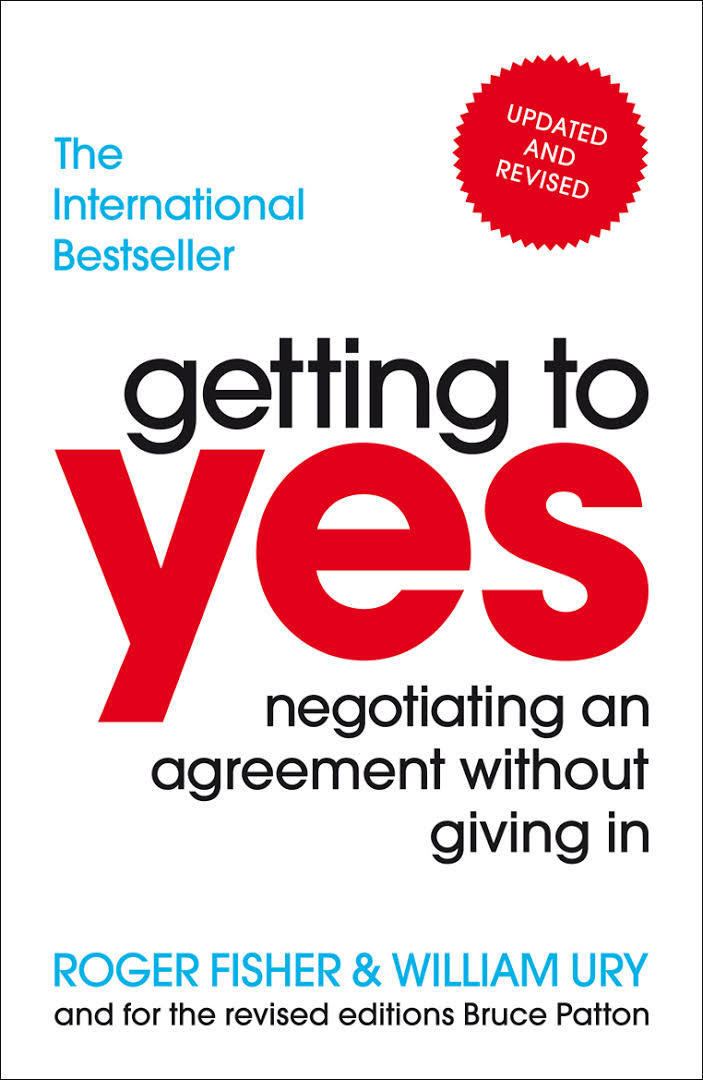7.8 /10 1 Votes7.8
Country United Kingdom Publication date 1981 Pages 200 pp. Originally published 1981 Genre Non-fiction Followed by Getting Past No | 3.9/5 Goodreads Language English Media type Print, e-book ISBN 978-0140157352 Publisher Penguin Books OCLC 24318769 | |||||||||||||||||||||||||||||||||
 | ||||||||||||||||||||||||||||||||||
Similar William Ury books, Business books, Negotiation books | ||||||||||||||||||||||||||||||||||
Getting to yes
Getting to Yes: Negotiating Agreement Without Giving In is a best-selling 1981 non-fiction book by Roger Fisher and William L. Ury. Reissued in 1991 with additional authorship credit to Bruce Patton, the book made appearances for years on the Business Week bestseller list. The book suggests a method called principled negotiation or "negotiation of merits".
Contents
Background
Members of the Harvard Negotiation Project, Fisher and Ury focused on the psychology of negotiation in their method, "principled negotiation," finding acceptable solutions by determining which needs are fixed and which are flexible for negotiators. By 1987, the book had been adopted in several U.S. school districts to help students understand "non-adversarial bargaining". In 1991, the book was issued in a second edition with Bruce Patton, an editor of the first edition, listed as a co-author. The book became a perennial best-seller. By July 1998, it had been appearing for more than three years on the Business Week "Best-Seller" book list. As of December 2007, it was still making appearances on the list as one of the "Longest Running Best Sellers" in paperback business books.
Method of principled negotiation
The method of principled negotiation was developed at the Harvard Program on Negotiation by Fisher, Ury, and Patton. Its purpose is to reach agreement without jeopardizing business relations. The method is based on five propositions:
Getting Past No
Getting Past No is a reference book on collaborative negotiation in difficult situations, written by William L. Ury. First published in September 1991 and revised in 2007, this book is the sequel to Getting to Yes.
